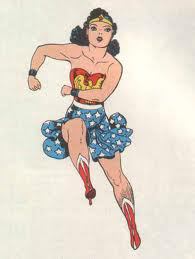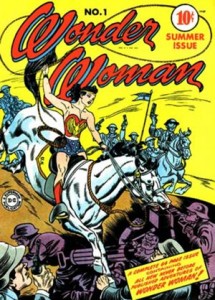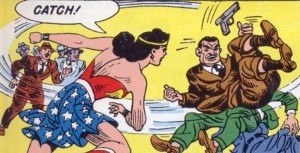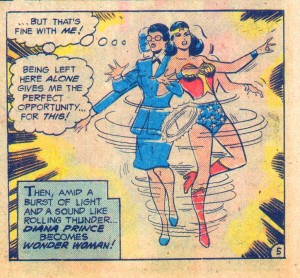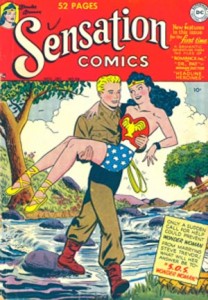From 1938 to around the late 1940s or early 1950s, superheroes such as Superman, Wonder Woman, Batman, The Flash and Captain America were introduced to the public. Superheroes each have their own unique history behind them. Wonder Woman is especially interesting because she is arguably the most iconic female superhero.
In 1938, Superman was introduced to the public by DC comics. His popularity brought other well known characters into creation. Comic book heroes took a patriotic turn due to WWII. Superheroes like Captain America were made to fight evil, specifically the Axis powers. Comic books were so popular that by 1941, fifteen million were sold a month. William Marston wanted to make a new superhero that would fight with love instead of violence. He created Wonder Woman, and she arrived in late 1941. Part of the inspiration for Wonder Woman came from Marston’s wife, Elizabeth. She was ahead of her time in terms of what was socially acceptable for women. For instance, few women earned educational degrees, Elizabeth earned three. The other influence to create Wonder Woman was from Marston believing that women were on the way to equality with men. He wanted to influence the public into accepting a new independent woman. Marston does this by updating an ancient Greek myth and giving us an iconic superhero.
The first issue of Wonder Woman shows us that she is an Amazon. The Greek myth of the Amazons was used to uphold the patriarchal society of the Greeks. The Amazons were a matriarchal society that lived on the margins of the Greek world. They were very tall, powerful and courageous. Females exclusively ran the government and went to war, while males took care of the home. The Amazons showed the opposite of Greek society and the undesirable consequences of women in charge. Females are foreign, dangerous and cause civilization to fall. The Amazon myth helped solidify a woman’s place inside the home, because if she was given the opportunity, she would be destructive. This is Wonder Woman’s unfortunate heritage. Marston updates this myth and makes it progressive.
Wonder Woman possesses male traits. She is strong, courageous, and confident, but she saves civilization instead of destroying it. She is created in a time period where women are forced to take on some male roles because of WWII. Women have to work in factories and even wear pants. Wonder Woman helps in this transition for women. Her personality and actions show us she is just as capable as a man. Yet she is beautiful, kind and still feminine. Her costume even pushes the boundaries for the time period. Dresses were still common, but to Wonder Woman a skirt or dress would not do for all the wrongs she would have to right. She first wears a practical yet stylish pair of culottes that look like a skirt, but are really shorts. For the 1940s, her culottes were shorter than most women would wear their skirts or dresses. These culottes quickly turn into loose shorts that resemble the shorts of women’s playsuits in the 1940s. Within a few months of her introduction, Wonder Woman’s shorts deviate from the norm by becoming form fitted and this lasts for at least ten years.
The top of Wonder Woman’s outfit was very revealing for the 1940s since it had no straps. Her outfit seems to almost be a swimsuit. When Wonder Woman is in disguise as Diana Prince, an Army nurse, she wears the usual nurse uniform of an A-line shirtdress that falls modestly below the knees. Wonder Woman pushes the limits with her outfit, while Diana Prince uses the accepted fashion of the era. The two outfits are quite opposite and help distinguish her two identities. She stretches the boundaries of acceptable fashion for women in the 1940s, but she fits into being a normal female.
Wonder Woman has good intentions for women’s equality, even though she is technically rooted from an oppressive society. She makes it ok for women to take over traditional male roles and traits. Wonder Woman shows us that women will benefit society by becoming strong and brave. She is enhanced, not an abomination. From Wonder Woman, we will eventually get other popular strong female characters, warrior princess types, such as Princess Leia, She-Ra, Princess Fiona, and Xena.
– Guest post by Tricia Sessions. Thanks Tricia!
Debbie Sessions has been teaching fashion history and helping people dress for vintage themed events since 2009. She has turned a hobby into VintageDancer.com with hundreds of well researched articles and hand picked links to vintage inspired clothing online. She aims to make dressing accurately (or not) an affordable option for all. Oh, and she dances too.
